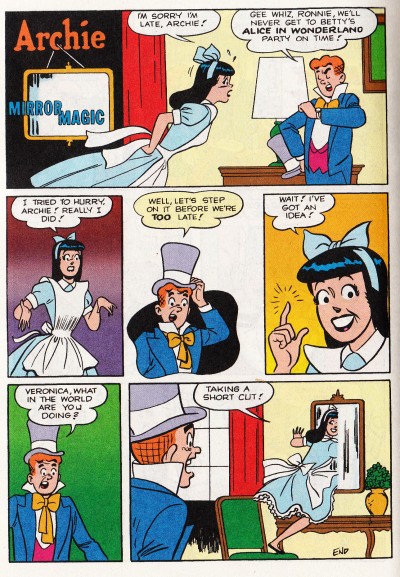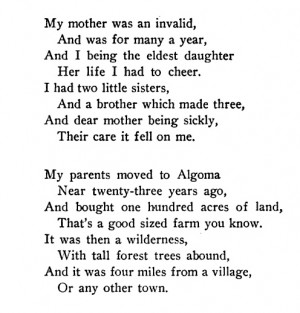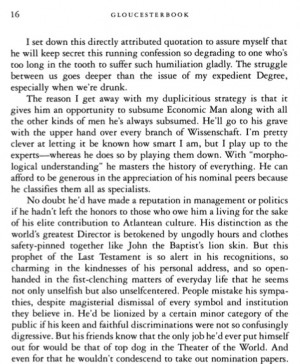Literature
Follies of the Mad Men #167
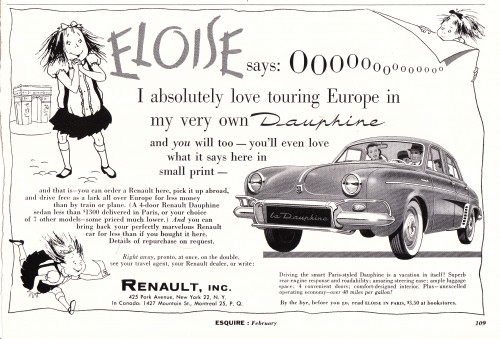
[Click to enlarge. From Esquire for February 1958.]
1) You are using a childrens' picture-book icon to advertise an adult product. Why not employ the Grinch to sell booze?
2) Even if some parent found this ad to be cute when presented with it in some other forum, you are running it in Esquire, a magazine which, prior to the debut of Playboy, was Swinging Bachelor Hangout #1.
Posted By: Paul - Wed Nov 23, 2011 -
Comments (4)
Category: Business, Advertising, Products, Literature, Children, 1950s, Europe, Cars
The Adventures of Mark Twain
We had some weird Zappa claymation not too long ago. Now we get some based on the work of Mark Twain.
Disregard the label on the clip above. It's really an excerpt from this full-length film.
Part 1 of the whole film follows:
Posted By: Paul - Wed Mar 16, 2011 -
Comments (3)
Category: Literature, Fantasy, Writers, Religion, 1980s
Veronica in Wonderland
[Click to enlarge.]I presume that Archie is not hallucinating here, and that Veronica's Alice-like abilities are canonical, part of the Riverdale continuity. And I look forward to her future exploits.
Posted By: Paul - Fri Mar 04, 2011 -
Comments (2)
Category: Costumes and Masks, Literature, Fantasy, Comics, Teenagers
The Stuffed Owl
I'm reading a Mark Twain book currently, Following the Equator. In it, he mentions a notoriously bad poet, Julia Moore, a name I had not thought of in ages. Moore's fabled lack of talent produced scads of bad poetry. You can read about her career here.Google has digitized at least one of her books, which you can read here. Be prepared to encounter such excruciating verse as this sample to the right.
Posted By: Paul - Fri Nov 27, 2009 -
Comments (9)
Category: Eccentrics, Ineptness, Crudity, Talentlessness, Kitsch, and Bad Art, Literature, Nineteenth Century
Towel Day: May 25
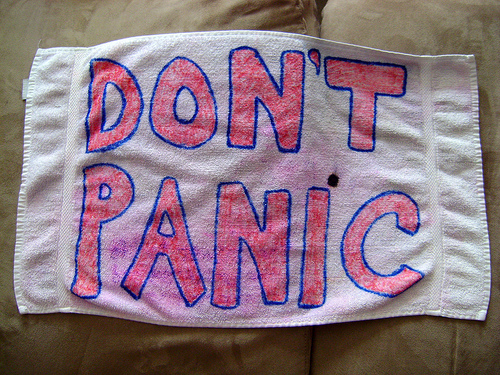
For those of you who are not already aware, May 25 is Towel Day, a celebration of the life and literature of Douglas Adams, author of The Hitchhiker's Guide to the Galaxy
If you want to see some pictures of froods in the know, they have their own group on Flickr
Posted By: fyshstyxx - Sun May 24, 2009 -
Comments (2)
Category: Aliens, Armageddon and Apocalypses, Holidays, Literature, Science Fiction, Writers
Jonathan Bayliss, RIP

Here's a sample from one of his novels. (Click on text to enlarge.) There's plenty more here, if you want it!
Posted By: Paul - Sat Apr 25, 2009 -
Comments (3)
Category: Eccentrics, Literature, Books, Writers, Obituaries
Alice Redux
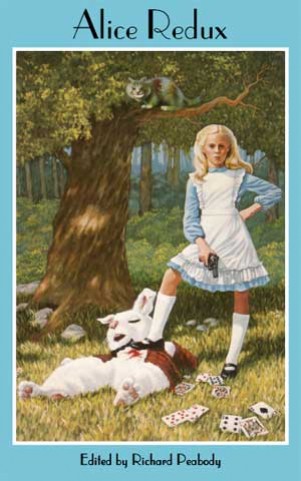
Posted By: Paul - Tue Apr 14, 2009 -
Comments (8)
Category: Animals, Death, Literature, Books, Fantasy, Parody, Weapons
Latin Mottoes
You've probably been looking for a list of Latin mottoes from 16th-century sources. Well, here it is. Most of them made sense to me, but these three I couldn't quite figure out:I use my cunning and my teeth simultaneously.
Scribit in marmore læsus.
The injured man writes in marble.
Quod huic deest me torquet.
What this creature lacks torments me.
This one should be the motto for the government bailout of the banks:
He who has once squandered his own, ought not to be trusted with another's.
Posted By: Alex - Wed Apr 08, 2009 -
Comments (3)
Category: Literature
Herrings Workers on Romance Covers
I don't think anyone will accuse Jane Liffen's article, published in a recent issue of Social Semiotics, of being overly broad in its focus. It's title is: “A very glamorized picture, that”: images of Scottish female herring workers on romance novel covers. Here's the abstract:And here are some of the romance novel covers in question.

I'll spare you the trouble of reading the article by summarizing its findings. Gutting herrings is smelly, dirty work. This is not accurately portrayed on romance covers. (Thanks to Dave Monroe!)
Posted By: Alex - Tue Apr 07, 2009 -
Comments (7)
Category: Literature, Gender
The Westermarck Effect
The Westermarck Effect is a psychological phenomena named after Finnish anthropologist Edvard Westermarck. The effect is that (according toWikipedia): "when two people live in close domestic proximity during the first few years in the life of either one, both are desensitized to later close sexual attraction." Which is why most people don't get the hots for their sibling.
However, if siblings don't grow up together and only meet for the first time later in life, they may be intensely sexually attracted to each other. This is known as genetic sexual attraction, or GSA. Again, from Wikipedia:
Finally, there is the phenomena known as the Westermarck Trap, which occurs when two people who have grown up together (and thus are sexually desensitized to each other) are expected to marry each other, because of an arranged marriage. According to one theory, this is what the novel Frankenstein depicts:
Posted By: Alex - Mon Mar 30, 2009 -
Comments (5)
Category: Literature, Books, Sexuality, Psychology

| Who We Are |
|---|
| Alex Boese Alex is the creator and curator of the Museum of Hoaxes. He's also the author of various weird, non-fiction, science-themed books such as Elephants on Acid and Psychedelic Apes. Paul Di Filippo Paul has been paid to put weird ideas into fictional form for over thirty years, in his career as a noted science fiction writer. He has recently begun blogging on many curious topics with three fellow writers at The Inferior 4+1. Contact Us |

